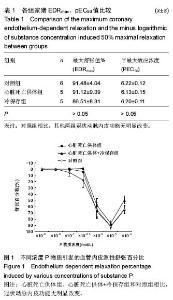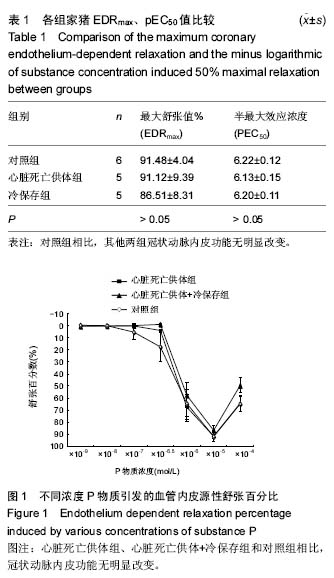| [1] 韩玲,肖燕燕.心脏移植及心肺联合移植[J].实用儿科临床杂志, 2008, 23(1): 9-16.
[2] Christie JD, Edwards LB, Kucheryavaya AY,et al.The Registry of the International Society for Heart and Lung Transplantation: 29th official adult heart transplant report-2012.J Heart Lung Transplant. 2012;31(10): 1073-1086.
[3] Nuñez JR, Del Rio F, Lopez E, et al. Non-heart-beating donors: an excellent choice to increase the donor pool. Transplant Proc. 2005;37(9):3651-3654.
[4] Barnard CN.The operation.A human cardiac transplant: an interim report of a successful operation performed at Groote Schuur Hospital, Cape Town. S Afr Med J. 1967;41(48):1271-1274.
[5] Barnard CN.Human cardiac transplantation: an evaluation of the first two operations performed at the Groote Schuur Hospital, Cape Town. Am J Cardiol. 1968;22(4):584-596.
[6] Martin J,Sarai K,Yoshitake M,et al.Successful orthotopic pig heart transplantation from non-heart- beating donors.J Heart Lung Transplant. 1999;18(6): 597-606.
[7] Repse S,Pepe S,Anderson J,et al.Cardiac reanimation for donor heart transplantation after cardiocirculatory death. J Heart Lung Transplant. 2010;29(7):747-755.
[8] Shirakura R,Matsuda H,Nakano S,et al. Myocardial energy metabolism in asphyxiated canine hearts preserved for 24 hours. Transplant.1992;53(6): 1215-1218.
[9] Gundry SR, Fukushima N, Eke CC, et al. Successful survival of primates receiving transplantation with" dead," nonbeating donor hearts.J Thorac Cardiovasc Surg. 1995;109(6):1097-10; discussion 1101-1102.
[10] Cooper JT,Chin LT,Krieger NR,et al.Donation after cardiac death: the University of Wisconsin experience with renal transplantation.Am J Transplant. 2004;4(9): 1490-1494.
[11] Foley DP, Fernandez LA, Leverson G, et al. Donation after cardiac death: the University of Wisconsin experience with liver transplantation.Ann Surg. 2005; 242(5):724-731.
[12] Morris PJ. Kidneys donated after cardiac death are acceptable. Lancet. 2010;376(9749):1276-1278.
[13] De Vera ME,Lopez-Solis R,Dvorchik I,et al.Liver Transplantation Using Donation After Cardiac Death Donors: Long-Term Follow-Up from a Single Center. Am J Transplant. 2009;9(4):773-781.
[14] Mason DP, Brown CR, Murthy SC,et al.Growing single-center experience with lung transplantation using donation after cardiac death.Ann Thorac Surg. 2012 ;94(2):406-412.
[15] Iyer A, Gao L, Doyle A, et al.Increasing the tolerance of DCD hearts to warm ischemia by pharmacological postconditioning. Am J Transplant. 2014 ;14(8): 1744-1752.
[16] Ali AA, White P, Xiang B, et al. Hearts from DCD donors display acceptable biventricular function after heart transplantation in pigs. Am J Transplant.2011;11: 1621-1632.
[17] Boucek MM, Mashburn C, Dunn SM, et al.Pediatric heart transplantation after declaration of cardiocirculatory death.N Engl J Med. 2008;359(7): 709-714.
[18] Abt PL, Fisher CA, Singhal AK. Donation after cardiac death in the US: History and use. J Am Coll Surg. 2006; 203(2):208-225.
[19] Bernat JL, Capron AM, Bleck TP,et al.The circulatory-respiratory determination of death in organ donation. Crit Care Med. 2010;38:963-970.
[20] Kootstra G,Kievit JK,Heineman E.The non heart- beating donor. British medical bulletin.1997;53(4): 844-853.
[21] Choong JW, Lim YW, Salamonsen RF,et.al. Continuous crystalloid microperfusion provides cardiac preservation superior to cold storage during prolonged donor heart preservation.J Heart Lung Transplant. 2011;30(4):S199.
[22] Li S, Loganathan S, Korkmaz S, et al. Transplantation of donor hearts after circulatory or brain death in a rat model.J Surg Res. 2015;195(1): 315-324.
[23] Rosenfeldt F, Ou R, Woodard J, et al.Twelve-hour reanimation of a human heart following donation after circulatory death. Heart Lung Circ.2014;23(1):88-90.
[24] Singhal AK,Abrams JD,Mohara J,et al. Potential suitability for transplantation of hearts from human non–heart-beating donors: data review from the Gift of Life Donor Program. J Heart Lung Transplant. 2005; 24(10):1657-1664.
[25] Mankad PS, Amrani M, Rothery S, et al. Relative susceptibility of endothelium and myocardial cells to ischaemia‐reperfusion injury.Acta Physiologica Scandinavica.1997;161(1): 103-112.
[26] Robson SC,Candinas D,Hancock WW,et al.Role of Endothelial Cells in Transplantation (Part 2 of 2). Int Arch Allergy Immunol.1995;106(4): 315-322.
[27] Christie JD,Edwards LB,Kucheryavaya AY,et al.The Registry of the International Society for Heart and Lung Transplantation: twenty-eighth adult lung and heart-lung transplant report-2011. J Heart Lung Transplant.2011;30(10):1104-1122.
[28] Kevelaitis E, Nyborg NC, Menasché P. Coronary endothelial dysfunction of isolated hearts subjected to prolonged cold storage: patterns and contributing factors.J Heart Lung Transplant.1999;18(3):239-247.
[29] Steen S.Preservation of the Endothelium in Cardiovascular Surgery-Some Practical Suggestions-A review.Scand Cardiovasc J.2001;35(5):297-301.
[30] Budrikis A, Liao Q, Bolys R, et al.Effects of cardioplegic flushing, storage, and reperfusion on coronary circulation in the pig.Ann Thorac Surg.1999;67(5): 1345-1349.
[31] 张伟华,乔晨晖,廖秋明.低温HP100XD保存液对离体猪冠状动脉内皮依赖性舒张反应的影响[J].郑州大学学报: 医学版,2006,41(1):108-110.
[32] 柳俊,马虹,何建桂,等.在体评价犬和猪冠状动脉内皮细胞的功能[J].中山大学学报: 医学科学版,2004,25(5):408- 412.
[33] Martin J, Lutter G,Ihling C, et al.Myocardial viability twenty-four hours after orthotopic heart transplantation from non-heart-beating donors.J Thorac Cardiovasc Surg.2003;125(6):1217-1227 |

